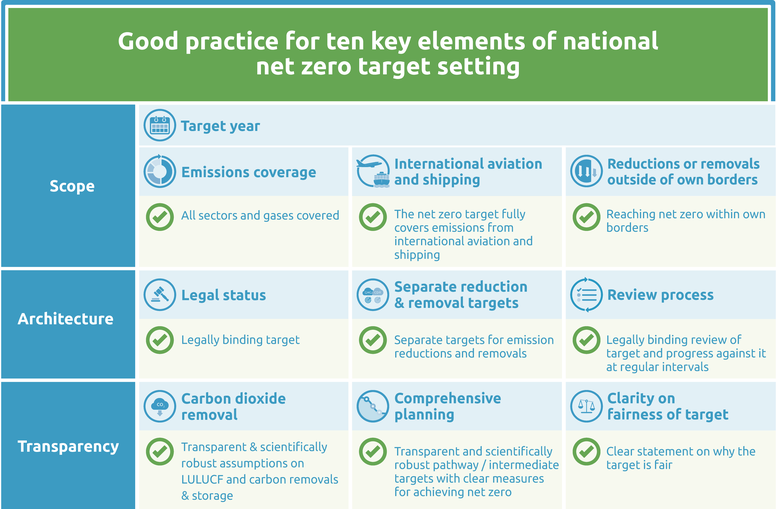Net zero targets
Summary
We evaluate the net zero target as: Poor
Australia included the target to achieve net zero by 2050 in its updated NDC in October 2021, and further elaborated it in the Long-term Emission Reductions Plan submitted as its Long-term Strategy (LTS) to the UNFCCC at the same time. The long-term plan indicates Australia will not legislate its net-zero target.
The Long-term Emission Reductions Plan leaves a significant emissions gap between its planned reductions and its net zero target in 2050.
The strategy presents ambiguous emissions scenarios which reduce emissions, at most, by 66% to 85% below 2005 emissions levels (rather than 100%). The strategy relies on global technology trends, carbon offsets and further unknown technology “breakthroughs” rather presenting any new policies.
The plan relies on so-called global technology trends for 15% of the reductions needed and a further 15% from “future technology breakthroughs” - compared to its 2005 baseline. A further 10-20% of reductions are expected to come from international or domestic offsets. Overall, the plan relies heavily on the future development of low-emissions technology with no plans to phase out coal, curb fossil fuel exports, or hold heavy polluters accountable.
CAT analysis of net zero target
Ten key elements
Scope
- Target year – Australia aims to reach net zero by 2050.
- Emissions coverage – The target covers all GHG emissions (i.e., the 7 Kyoto gases: CO2, CH4, N2O, HFCs, PFCs, SF6, NF3) and all sectors of the economy (Australian Government, 2021a).
- International aviation and shipping – The target excludes both international aviation and shipping (Australian Government, 2021).
- Reductions or removals outside of own borders – Australia intends to rely on international offset credits to meet its net zero target. Australia’s Long-term Emissions Reduction Plan indicates it plans to rely on international and domestic reductions for 10-20% of needed reductions to reach net-zero by 2050.
Target architecture
- Legal status – Australia included the net zero target in its Long-term Emissions Reduction Plan submitted to the UNFCCC as Australia’s LTS (Australian Government, 2021). The long-term plan states Australia will not legislate its net-zero target.
- Separate reduction & removal targets – Australia provides no information on its intention to communicate separate emission reduction and removal targets.
- Review process – Australia has a non-legally binding process in place to review the net zero target itself and intermediate targets. The Long-term Emission Reductions Plan states the plan will be refined through five yearly ‘review and refine’ cycles.
Transparency
- Carbon dioxide removal – Australia does not provide transparent assumptions on carbon dioxide removals. Australia’s long-term plan does not distinguish between domestic and international offsets and further includes unproven technologies such as carbon capture and storage in its discussion of offsets that do not provide actual offsets.
- Comprehensive planning – Australia’s Long-term Emission Reductions Plan lacks specific emission pathways on how to reach net zero emissions (Australian Government, 2021). The plan indicates 40% of the emissions reductions needed to achieve net zero can be achieved through adoption of low emission technologies prioritised through Australia’s Technology Investment Roadmap and 10-20% can be achieved through domestic and international offsets. There is a significant emissions gap remaining by 2050 that is not fully accounted for in Australia’s plan.
- Clarity on fairness of target – There is no reference to equity or fairness in either a government or an advisory document, or only vague statement with missing explanation in Australia’s NDC (Australian Government, 2021a).
Good practice
The Climate Action Tracker has defined the following good practice for all ten key elements of net zero targets. Countries can refer to this good practice to design or enhance their net zero targets.

Further analysis
Latest publications
Stay informed
Subscribe to our newsletter




